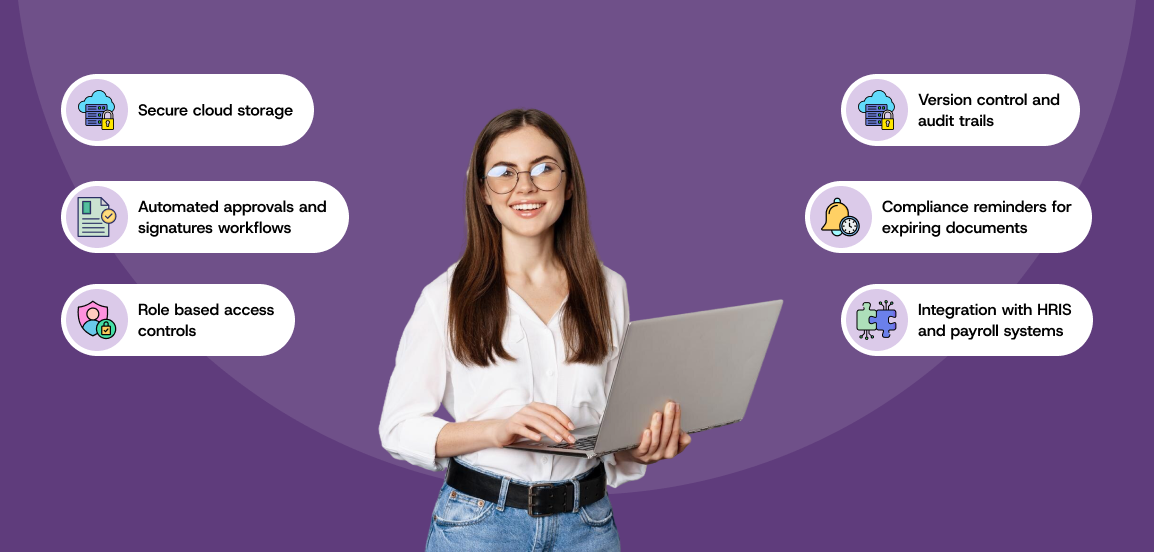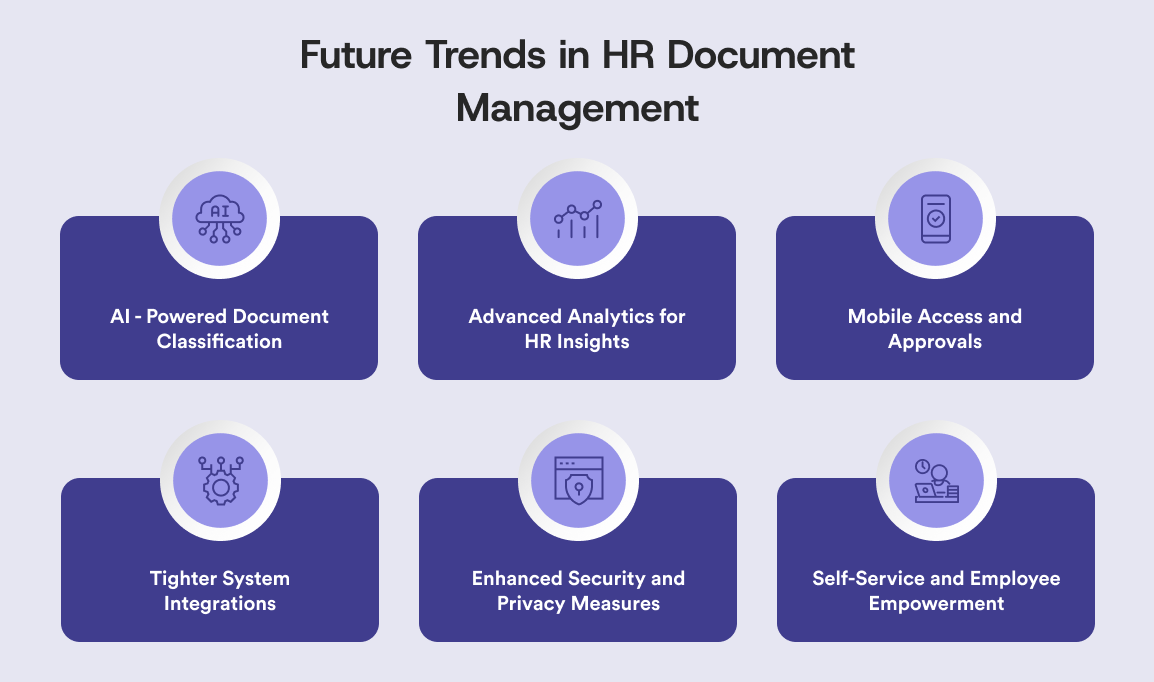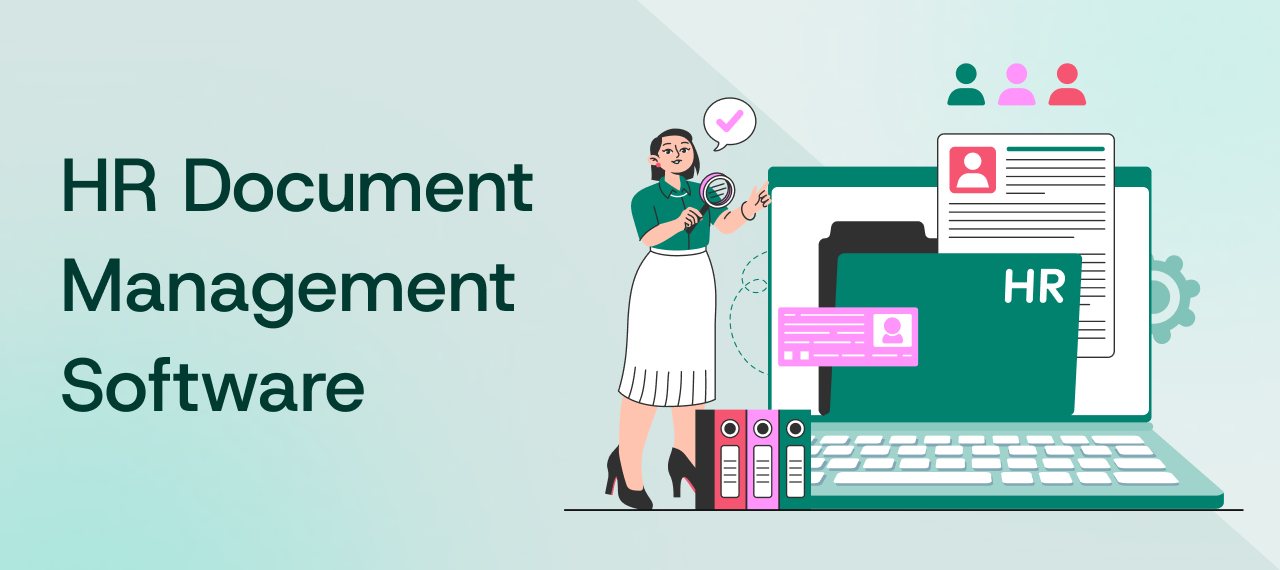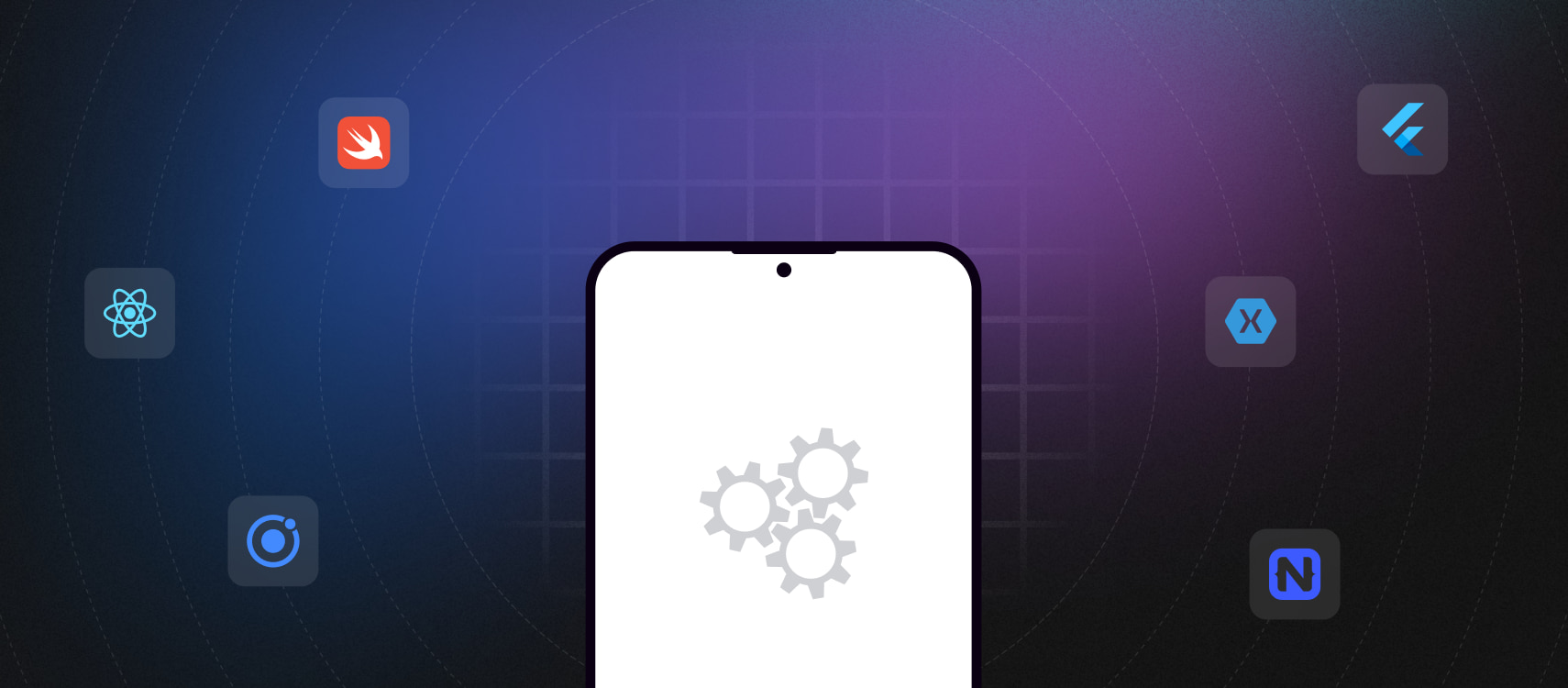Table of Contents
- HR Document Management Complexity
- What’s HR Doc Software
- Why Use an HR Management Software
- Must-Have Features
- Best Practices
- HR Process Integration
- Implementation Challenges
- Trends in HR Document Management
- How to Select
- Final Thoughts
- FAQs
No job is so painstaking and time-consuming for any HR team than managing tons of human resources documents. HR professionals are also handling a whole lot of files on a daily basis, such as offer letters, contracts, compliance forms, and performance reviews.
In an era when companies scale rapidly, this paperwork bottlenecks the process and creates operational inefficiencies resulting in an increased risk of errors and subsequently non-compliance risk. This is where the HR document management solutions come into the picture.
One solution to eliminate these outdated practices is the digitisation and automation of employee file management that allows companies to exchange cluttered filing cupboards and Excel spreadsheets for a clean, secure, and centralised system, ensuring speedier, easier compliance and accuracy maintenance.
In this blog, we discuss how the most efficient HR document management software eases day-to-day operations, bolsters your HR processes, benefits your employees and why it is not just a choice anymore but an essential to invest in the right HR document management systems.
The Rising Complexity in HR Document Management
On average, an HR department handles thousands of files on a yearly basis. Recruitment records, employment contracts, tax forms, certifications, policy acknowledgements, disciplinary records, medical information, and exit paperwork are included in this. If the HR tools lack the right document management features, the HR staff can waste several hours simply looking for the relevant files or recreating lost documents.
This leads to issues with traditional filing methods, including:
- Physical storage constraints
- Security vulnerabilities
- Difficulty in tracking document versions
- Delayed approvals and workflows
- Compliance headaches with audits and legal requirements
These challenges are not theoretical. Research shows 46% of employees report they “sometimes or almost always” struggle to find the information they need, often because documents are scattered across paper files or legacy systems. Additionally, 48% of workers say it’s hard to quickly locate documents, while 47% describe their filing systems as confusing or ineffective.
What Is HR Document Management Software?

HR document management software is a digital solution that ensures HR teams can store, organise, protect, and share HR documents with ease. Imagine it as a wise filing cabinet that never lose a file and enables you access whenever you need anywhere.
A good human resources document management system typically provides features such as:
- Secure cloud storage
- Role-based access controls
- Automated approvals and signatures workflows
- Version control and audit trails
- Compliance reminders for expiring documents
- Integration with HRIS and payroll systems
HR document management systems, employee file management software or any other name you may call it have a common objective to remove manual tasks and human errors.
Why Use an HR Document Management System?
In a human resource document management system, file management of all employees is centralized which further makes it easier for HRs to store, retrieve, and share documents securely. HRMS therefore helps to maintain compliance, data security, reduces manual work and fosters a paperless HR ecosystem.
Centralised Employee File Management
Through employee document management software, you can have all documents stored under one safe but secure database. Say goodbye to dispersed drives, email attachments, or the time-consuming process of searching in a physical file cabinet. A centralized approach makes you manage the employee file more quickly and easily.
HR teams have a well-placed search facility that resolves to the deepest level any record, including the onboarding document one used five years ago to a recent appraisal form. Boosts HR response time to employee queries within a few hours which saves cost and time.
Improved Compliance and Data Security
HR teams are worried about regulatory compliance. In many labour laws, it is written in the directive that the companies should retain employee records management software to maintain retention schedules and also protect highly sensitive information.
Today’s hr document management solutions have encryption, audit logs, and role-based permissions. Such features keep human resources documents safe from unauthorised access and help with audit compliance as well.
This way, nothing falls between the cracks with automatic alerts for expiring contracts or certifications- especially in heavily regulated industries.
Enhanced Collaboration and Remote Access
The workplace is hybrid or entirely remote these days. HR document software on the cloud is available to HR personnel, managers, and employees on-demand anywhere anytime with the right access.
This enables an HR document management system software to electronically allow teams to share and sign documents, reducing the time involved in excessive on-site meetings or mailing back and forth and speeding up processes such as onboarding, performance reviews, and policy updates.
Reduced Administrative Workloads
The HR peripheral was a task that was more of a drain than a stream with the manual file management taking away ever so much of the HR time and energy. Supercharge HR and give more time back to people oriented activities like recruitment, employee engagement, training & development and strategic HR initiatives by automating document workflows.
Many paperless software solutions are built with e-signatures, automatic reminders, and electronic approvals to make it easier and quicker to process paperwork. Best Employee Record Keeping Software ensures that no document is lost or missed.
Scalability and Future-Proofing
With company growth, there is a ramp-up to the HR related documents too. In an HRIS that does document management well, the system scales easily, managing thousands of files without needing additional cabinets or employee hours.
Cloud-based employee record management software is automatically updated with new features, security patches, etc. Keeping your system updated ensures it will keep up with regulations and changing needs of your business.
Features to Look for in the Best HR Document Management Software
Finding the right HR document management software is not merely a box-ticking exercise. What you really need is an integrated HR solution that provides an automatic fit to your HR workflows, can grow with your business and can actually cut down on administrative burden and enhance compliance. Here, then, is a more detailed examination of some of the top features that should be on your priority list when looking for an HR document management system:
User-Friendly Interface
This system is something that your HR team & employees will be using frequently, so it needs to be user-friendly and easy to navigate. All are built to lessen the learning curve and make sure that your employee file management gets faster and hassle-free. Facilitates ease of access for employees from any kind of device and ease of management for HR teams who can deal with easy file management without complex processes and exorbitant IT infrastructure.
Strong Security
Human resources documents contain sensitive personal data, making security extremely important. For example, find encryption for files being stored or sent across the internet, role-based user access that limits which users can see specific documents, and multi-factor authentication for logging in securely. These functionalities safeguard your HR data, and allow only the authorised personnel with HR doc management system access to view or edit the files.
Workflow Automation
Modern hr document software will need to have functionality that automates workflows to ensure that you stop burning time in chasing approvals and deadlines. With automated document routing for electronic signatures, notifications for updates in document status, and reminders for upcoming document expiry dates, HR teams stay organised and proactive, so the chances of any documents getting lost are slim to none.
Compliance Support
HR cannot compromise on compliance with labour laws and industry standards. Ideal hr document management software will assist document retention schedules, version history tracking, and audit trails on every document. Facilitating compliance demonstration during audits and avoiding legal risks of your organisation
Integration
The document management system HR should fit perfectly with your HRIS, payroll platforms, and employee data management software. This keeps data synchronized between systems, reduces the need to enter duplicate data multiple times and updates documents such as contracts and forms related to pay automatically in employee profiles.
Cloud Storage
Cloud human resources document management software allows for secure, scalable storage to be accessed from any device, anywhere. HR staff and employees can access HR documents and manage records from anywhere without compromising security and compliance. You can also work from home or have a hybrid working but for other jobs.
By integrating these core features as part of your HR document management solutions, you ensure that HR remains a paper-driven, operationally intense function, and becomes a strategic partner in your organisation’s transformation journey.
Best Practices to Make the Most of HR Document Management Software
HR document management software is a strategic implementation but successful rollout needs planning and execution. Implementing best practices leads to a seamless transition and optimal ROI.
Define Clear Objectives
Pinpoint the pain points you want to address: cut down manual document handling, enhance compliance, facilitate remote access, etc. How clear objectives lead to a configuration of your HR document management system that align with your HR objectives.
Include Stakeholders at Early Stage
Include HR managers, IT teams, and Compliance officers during the planning process. And when they provide their feedback, HR doc management system changes itself according to the existing workflow and the real needs of the users.
Audit Existing Documents
Perform a document audit before migrating to your employee document management software. Reduce Migration Efforts via File De-cluttering and Organising Organise or dispose of legacy or repetitive files to facilitate migration and make it easier to search the system.
Prioritise Data Security
Work with your vendor to implement strict security controls – encryption, role-based access controls, and regular backups, at a very bare minimum, to ensure your document management HR system meets privacy law requirements.
Train Your HR Team
Provide some training for your hr document software, make sure HR staff and managers know features like automated workflows, document retrieval, compliance, etc. Users who are trained will leverage the system to the fullest.
Make Your Rollout a Pilot First
Test it with one department before rolling out to the entire company. To ensure seamless integration, it reduces the gap, feedback implementation and workflow changes in advance.
Tracking and Monitoring
Continue assessing the efficiency of your HR document management systems. Monitor usage statistics, ask users for input, and iterate your processes while also thinking about how to continue to enhance the efficacy of digital records.
These best practices ensure faster processes, stronger compliance, and an HR function that is confident in its ability to support your organisation as it evolves and grows when implementing HR document management software.
Integrating Document Management with Broader HR Processes

Modern HR departments are powered by a tech stack that integrates employee document management system tools with other HR systems to ensure there are no silos, workflows are seamless and there is no data overload in any part of the HR function.
Onboarding and Offboarding Integration
By integrating document management with onboarding tools, signed offer letters, policy acknowledgments, and ID proofs can be collected and stored automatically. It helps manage exit documentation pickup in a timely manner, ensuring compliance and uniformity during offboarding.
Performance Management Sync
Integrating employee record management software with performance management systems allows for automatic updates to appraisal forms, promotion letters, and goal-tracking documents. This keeps track of all milestones and assessments, making them available at the click of a button in an employee’s digital folder.
Payroll and Compliance Alignment
The integration of your payroll software with document management (HR) system helps in updating and making available payslip, tax forms, compliance documents etc for both HR & employees automatically. This reduce risk of errors and increases clarity of financial and compliance reporting.
Learning and Development Tracking
Integration of learning management systems with document management enables HR to save certifications, training completions, and development plans in the same employee file. Having all this centralised visibility enables organisations to keep track of whether team members are completing mandatory in-house training and also gain insights into skills development progress over time.
Leave and Attendance Management
With integration of doctor’s certificates and leave approvals, the leave and attendance system secure documents in employee files. This simplifies the compliance with leave policies as tracking and audit readiness is more effective.
Employee Self-Service Enablement
With the software devices integrated, they allow workers to upload, access, and update the documents through self-service portals. As employees now can view their documents on-demand, it reduces the HR workload and improves employee experience.
A solution that is whole in form reduces redundancy in data entry, improves accuracy in data and creates a single HR ecosystem that is at par to be scalable and remain compliant.
Challenges to Overcome When Implementing an HR Document Management System
Transitioning from paper files or a proliferation of disconnected drives to a singular human resources document management software may feel daunting, but an upfront approach to challenges will ease the transition.
Change Resistance
Another reason for the lack of widespread use of HR software by organizations, employees and managers are really comfortable with manual-process which they are following since ages and getting benefits by them and resisting to adapt new systems. This can be dealt with by letting them know how transferring to this system saves time, reduces efforts and increases accuracy in their daily workflows.
Data Migration Complexity
Centralising all paper files and online documents needs a thorough plan on what things are to be migrated, in what order and, more importantly, sorted into categories. Develop a phased migration strategy which first identifies priority documents to digitise while ensuring ongoing operations.
Training Requirements
Poorly trained HR teams may fail to fully utilise all the key features of a HR document management system. Arrange formal training sessions and allow access to tutorials and vendor support to draw confidence during usage all around the day.
Integration with Existing Systems
Setting up the new system can appear elaborate, especially when integrating it with payroll, HRIS, and other HR tools. Partner closely with your vendor to manage both the integration and data syncing between the systems.
Data Security Concerns
HR Teams Concerned About Data Breach While Migrating or Using the System To assist with a confidence transition, make sure that the system has encryption, role-based permissions and secure cloud storage.
Cost Considerations
For smaller HR teams, a hefty upfront investment in HR document management software can be intimidating. Look at the potential return on investment, especially time savings, decreased risk of non-compliance and the removal of physical storage costs, over the long haul.
Maintaining Compliance During Transition
Why Migration Has Document Retention and Privacy Implications You Have to Follow During Migration During the transfer of documentation, identify compliance safeguards with your vendor and legal team.
To combat this, work with a vendor that provides onboarding assistance, migration, and continuous training. Your team should understand how the HR document management system is going to help them. This knowledge will ensure faster adoption and sustainability.
Trends in HR Document Management to Look Out For in the Future

Smart, automated, and secure document management for human resources is the way of the future, allowing HR teams to work with ease and accuracy.
AI-Powered Document Classification
AI will then automatically tag, categorise and even organise HR documents all based on their content and context. It minimizes the data entry work but keeps consistent and accurate filing for retrieval.
HR Analytics with Advanced Analytics
Analytics dashboards for document tracking, approvals and workflow bottlenecks will be built into future systems. These insights will allow HR teams to identify gaps in the process and compliance risk areas before they turn serious.
Mobile Access and Approvals
If mobile-friendly document management is used, employees and managers will be able to view, upload, and sign documents from anywhere, which is a great evolution, considering that remote and hybrid work environments are here to stay.
This accelerates approvals and facilitates a frictionless employee experience.
Tighter System Integrations
The future of employee data management software will integrate with HRIS, payroll, and performance systems to form a seamless ecosystem of data. This helps to eliminate duplicate entries of data while providing an accurate source of truth among different HR processes.
Improved Security and Privacy Features
Future systems will also use a combination of more sophisticated encryption, access controls, and audit logging as the data privacy regulation matures. This also enables HR teams to keep compliance intact while safeguarding sensitive employee data.
Self-Service and Employee Empowerment
HR can now spend more time on strategic initiatives that would positively impact the business, as employees will be able to upload, download, and manage documents seamlessly. This adds transparency and enables employees to take a proactive approach in handling their documentation with HR.
Organisations need to stay compliant, agile, and efficient in a growing business landscape by being one step ahead with the best HR document management software in tune with these trends.
How to Select the Best HR Document Management Software for Your Organisation
Choosing the right software for managing your HR documents is paramount to enhancing efficiency, ensuring compliance as well employee experience.
When thinking about these two choices, consider:
- Analytics: List out your biggest pain points whether high document workloads, compliance, or a remote workforce and find software that will tackle your needs directly.
- User-friendliness: Consider for a user-friendly interface with simple navigations, clean dashboards and document search options to enable quick onboarding for the HRs and employees.
- Data Protection: Look for a solution that provides strong encryption, role-based storage controls, and secure cloud infrastructure for sensitive employee data.
- Ability to Automate: See if the system has features like automated workflows, e-signatures, notifications for approvals and expirations of documents as this reduces manual tracking.
- Seamless Integration with Current Tools: Choose software that easily integrates with your HRIS, payroll systems, and other HR tech to keep the data consistent across platforms.
- Compliance tools: Ensure the system has retention policy management, audit trails, and reporting tools to facilitate legal and regulatory compliance.
- Scalability: Choose a solution that will grow as your organisation grows, still managing with the spikes in document volumes without a decrease in performance as your workforce grows.
- Vendor Support and Training: Consider vendors that provide solid customer support, onboarding help, and training material to ensure your HR team uses the system to its full potential.
- Cost & in Comparison to ROI: Different pricing models must be evaluate but weigh true, against the time-savings, minimized risk of not meeting due-dates on governance and efficiencies associated with a paperless environment and self-directing functions.
- Trial / Demo: Ask for the product to be demonstrate, or try the product with a small pilot to understand where that software fits into your daily workflows and determine if it actually works for your organisation’s needs.
Well-considered selections will help in making your HR document management system a long-term asset to your HR teams and a whole corporation.
Final Thoughts
In today’s world of HR, it is not merely about hiring and firing; it is about ensuring seamless, compliant, and secure employee experience from day+1 to the last day. This ambition is hamper by outdated file cabinets and personnel spreadsheets.
A powerful HR document management solution like Document Management allows you to manage employee files, protect sensitive human resources documents, increase team productivity, and set the stage for scalable growth.
Regardless of the size of your organization, investing in document management solutions is one of the best investments you can make for your people and your business.
Is your organization prepare to step into the future of HR document management? An appropriate employee document management software may just be the only missing piece to optimise your HR functions seamlessly digitized, securely stored, and highly efficient.










